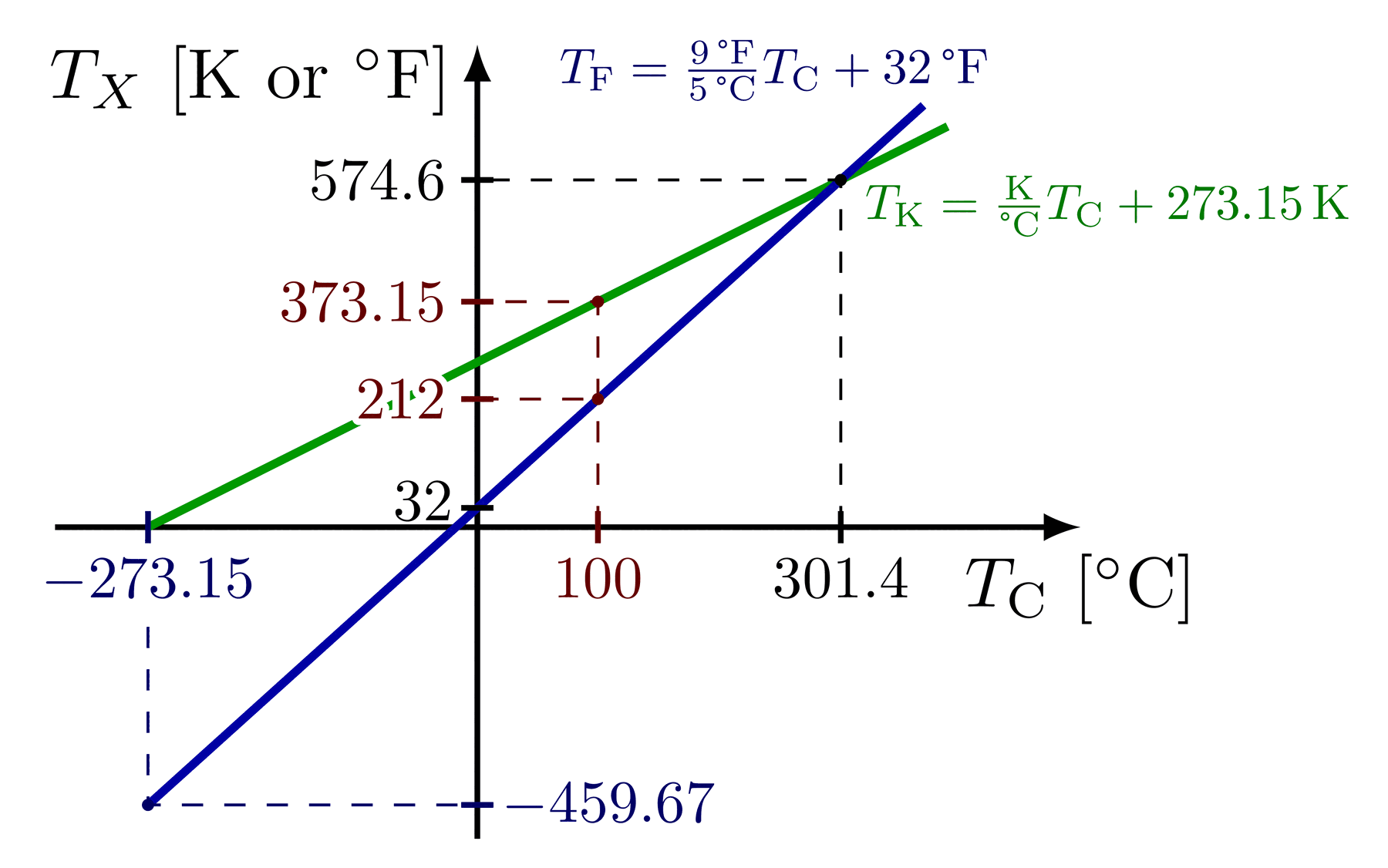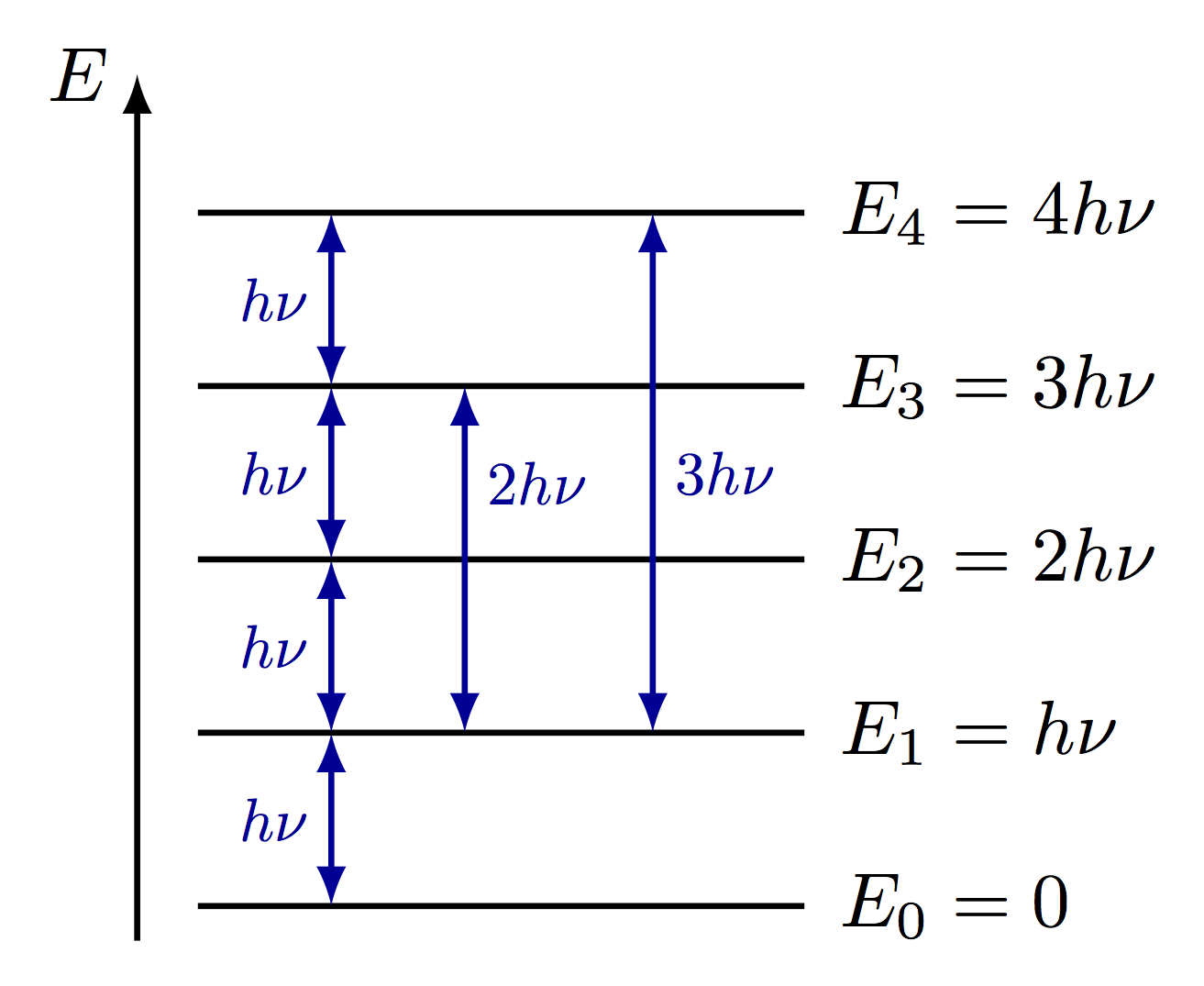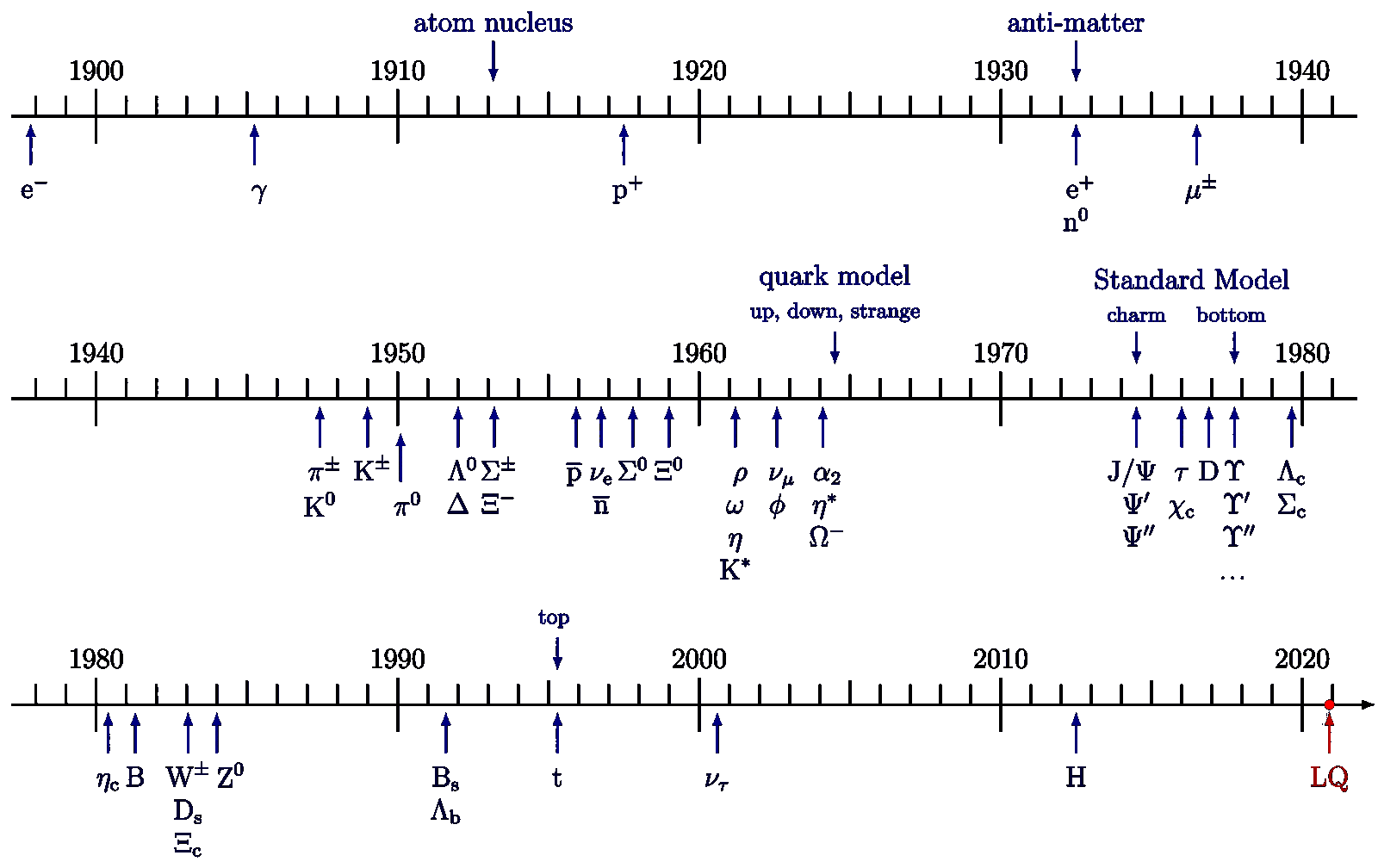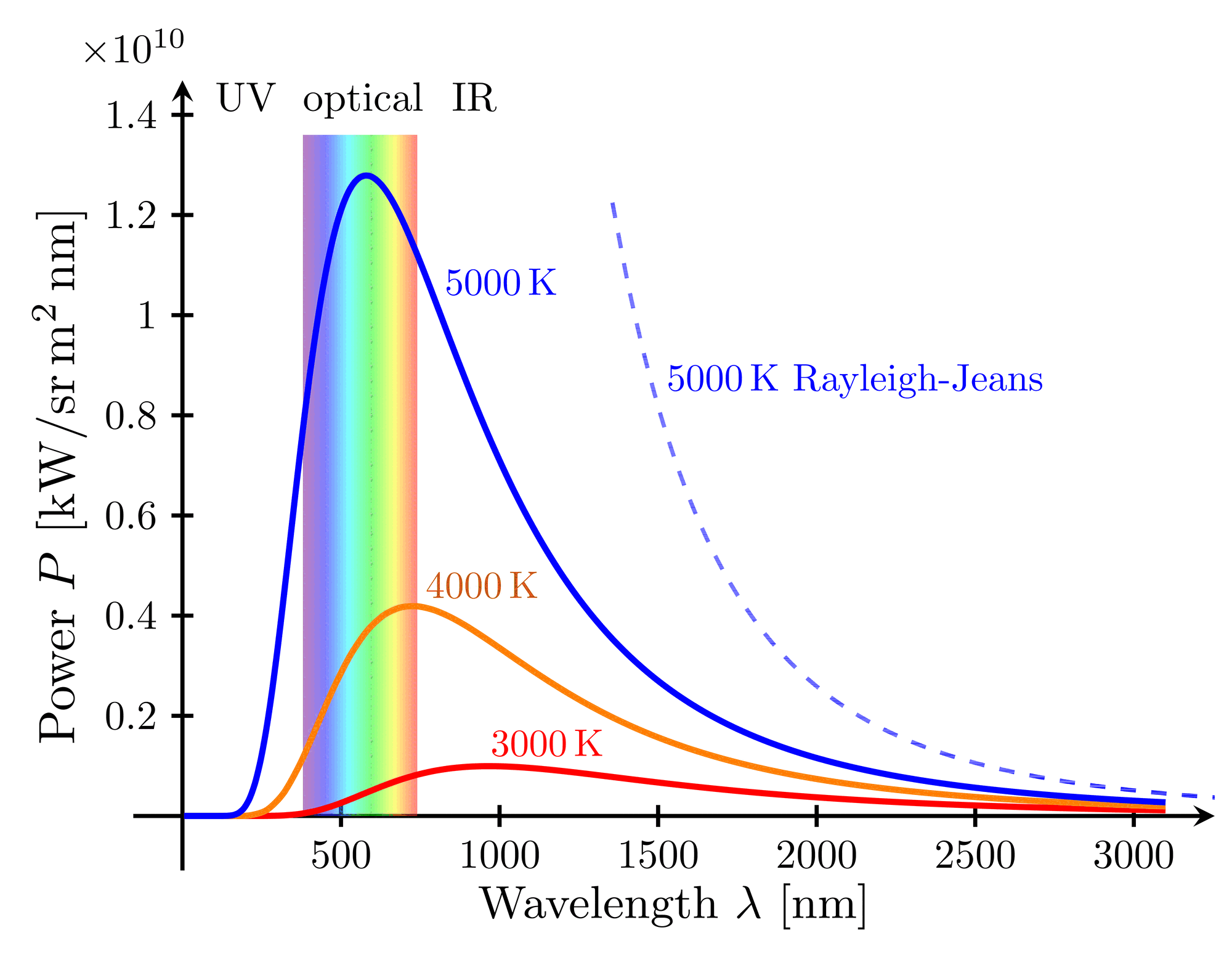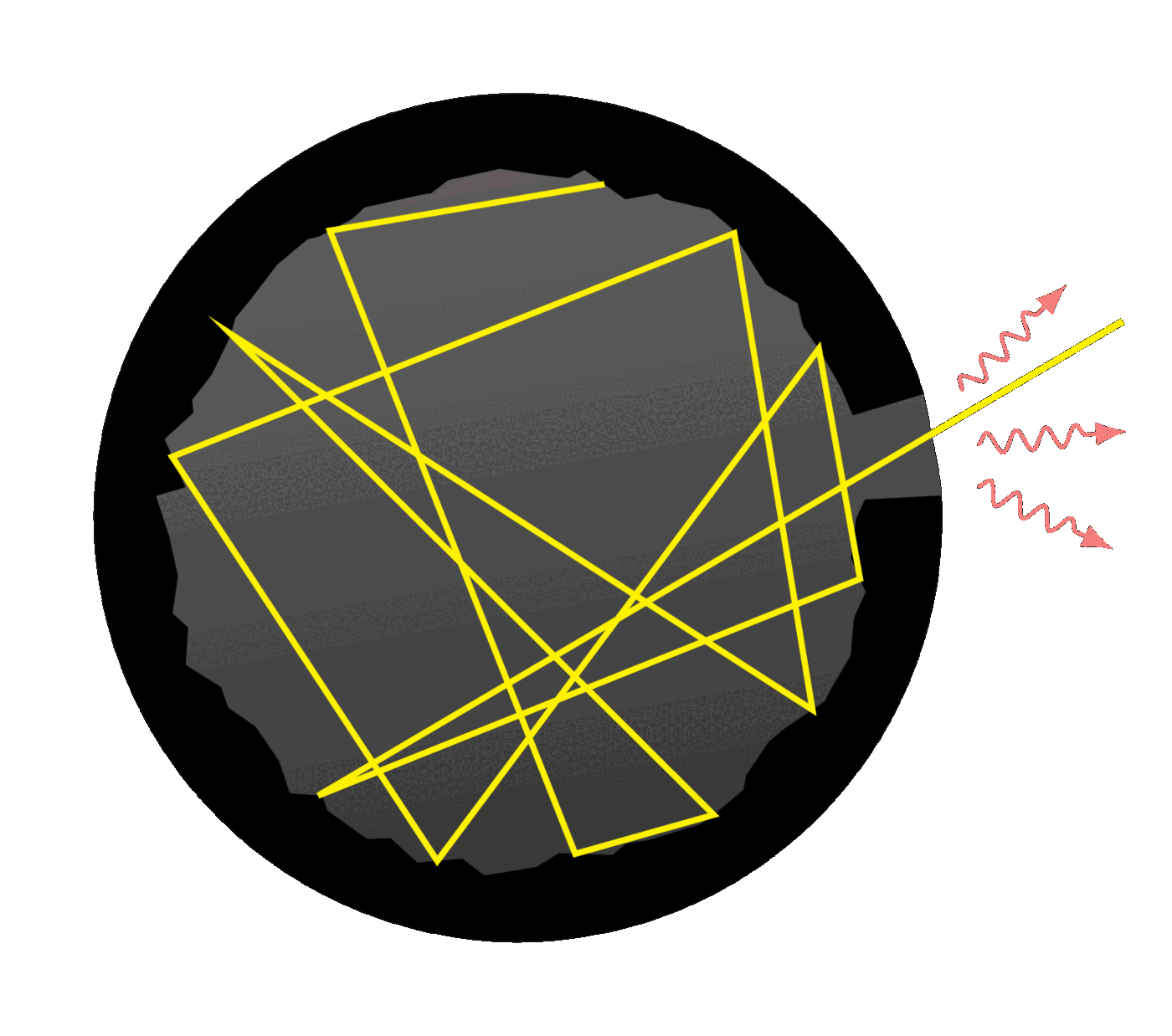Color of an ideal black body as a function of temperature.
Find other black body diagrams via the “black body” tag: black body cavity model, plots, Plank oscillators.
Edit and compile if you like:
% Author: Izaak Neutelings (March 2019)
\documentclass[border=3pt,tikz]{standalone}
\tikzset{>=latex} % for LaTeX arrow head
\usepackage{xcolor}
\usepackage{physics}
\usepackage{siunitx}
\pgfdeclareverticalshading{rainbow}{100bp}{
color(0bp)=(red); color(25bp)=(red); color(35bp)=(yellow);
color(45bp)=(green); color(55bp)=(cyan); color(65bp)=(blue);
color(75bp)=(violet); color(100bp)=(violet)
}
\pgfdeclareverticalshading{blackbody}{100}{
rgb(0)=(0,0,0);
rgb(25)=(0,0,0);
rgb(25+50/11*1)=(1,0.0337,0);
rgb(25+50/11*2)=(1,0.2647,0.0033);
rgb(25+50/11*3)=(1,0.4870,0.1411);
rgb(25+50/11*4)=(1,0.6636,0.3583);
rgb(25+50/11*5)=(1,0.7992,0.6045);
rgb(25+50/11*6)=(1,0.9019,0.8473);
rgb(25+50/11*6.5)=(1,1,1);
rgb(25+50/11*7)=(0.9337,0.9150,1);
rgb(25+50/11*8)=(0.7874,0.8187,1);
rgb(25+50/11*9)=(0.6925,0.7522,1);
rgb(25+50/11*10)=(0.6268,0.7039,1);
rgb(75)=(0.3277,0.5022,1);
rgb(100)=(0.3277,0.5022,1)
}
\begin{document}
% RAINBOW
\begin{tikzpicture}
\shade[shading=rainbow,shading angle=270] (0,0) rectangle (10,1);
\end{tikzpicture}
% BLACK BODY
\begin{tikzpicture}
\def\tick#1#2{\draw[thick] (#1+.08) --++ (0,-.16) node[below=-2pt,scale=1] {\strut #2};}
\def\ticka#1#2{\draw[thick] (#1+.08) --++ (0,-.16) node[above=2pt,scale=1] {\strut #2};}
% i TEMPERATURE RGB COLOR
% 0 900 0.0000 0.0000 0.0000
% 10 1000 1.0000 0.0337 0.0000
% 20 2000 1.0000 0.2647 0.0033
% 30 3000 1.0000 0.4870 0.1411
% 40 4000 1.0000 0.6636 0.3583
% 50 5000 1.0000 0.7992 0.6045
% 60 6000 1.0000 0.9019 0.8473
% 6500 0.9997 0.9998 1.0000 white
% 70 7000 0.9337 0.9150 1.0000
% 80 8000 0.7874 0.8187 1.0000
% 90 9000 0.6925 0.7522 1.0000
% 10000 0.6268 0.7039 1.0000
% 15000 0.4749 0.5824 1.0000
% 30000 0.3751 0.4926 1.0000
% 100 40000 0.3277 0.5022 1.0000
% http://www.vendian.org/mncharity/dir3/blackbody/UnstableURLs/bbr_color.html
\shade[shading=blackbody,shading angle=-90] (0,0) rectangle (10,1);
\draw[->,thick] (-0.2,0) -- (10.8,0) node[right,scale=1.1] {T [\si{\degree C}]};
\tick{0,0}{ 900}
\tick{10/11*1,0}{1000}
\tick{10/11*2,0}{2000}
\tick{10/11*3,0}{3000}
\tick{10/11*4,0}{4000}
\tick{10/11*5,0}{5000}
\tick{10/11*6.5,0}{6500}
\tick{10/11*8,0}{8000}
\tick{10/11*10,0}{10000\,\,}
\tick{10,0}{\,40000}
% EXAMPLES
\ticka{10/11*1.0,1}{\strut lava}
\ticka{10/11*3.5,1}{\strut Betelgeuze}
\ticka{10/11*5.8,1}{\strut sun}
\ticka{10/11*9.9,1}{\strut Sirius}
\end{tikzpicture}
\end{document}
Click to download: blackbody_color.tex • blackbody_color.pdf
Open in Overleaf: blackbody_color.tex





